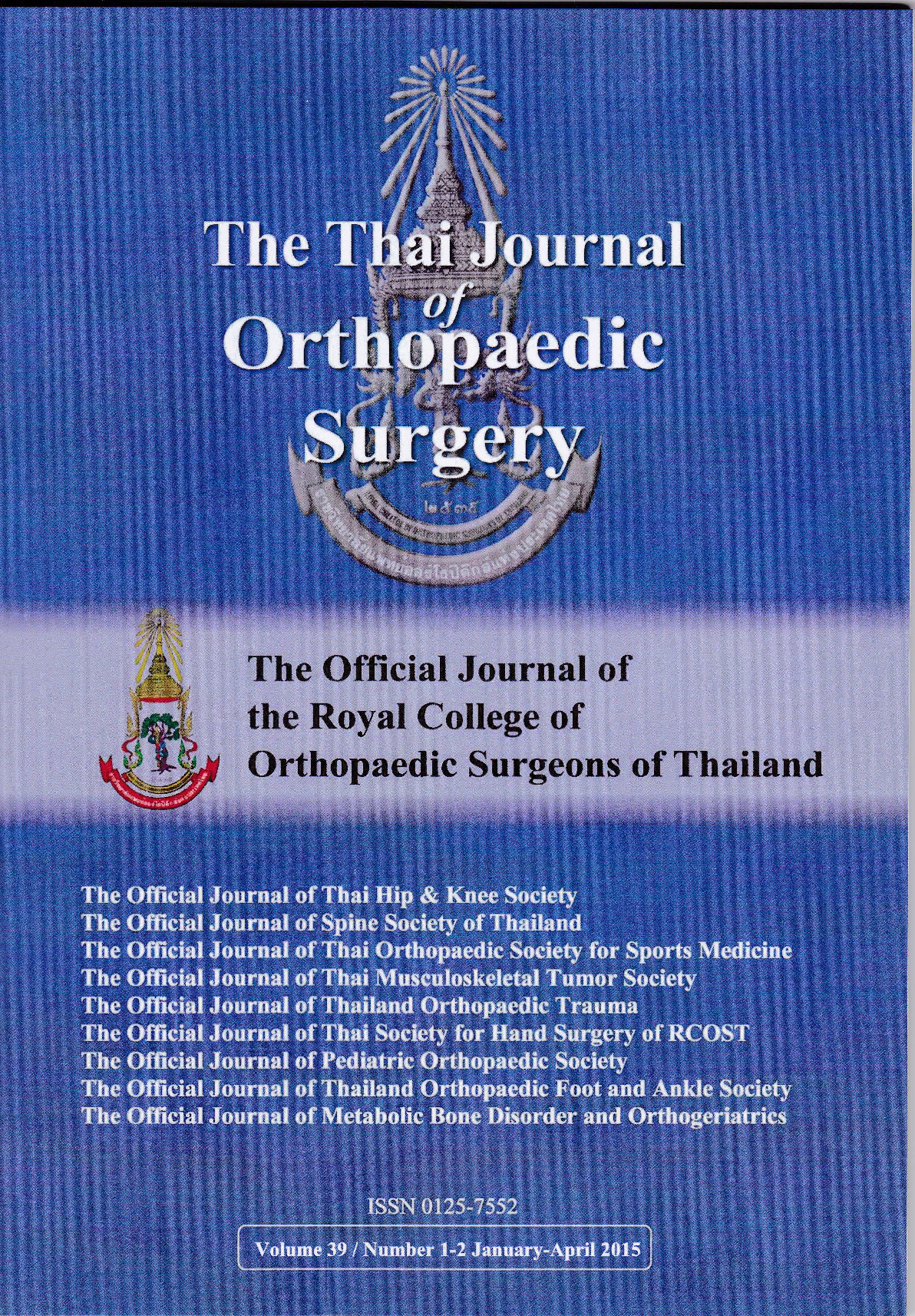Innovative Design of Tumor Registry Database Program for Musculoskeletal Oncology Service
Main Article Content
Abstract
Purpose: To demonstrate an innovative program design which combines tumor registration and electronic health records that suit Thai orthopedic oncologist practice.
Methods: The Thai Musculoskeletal Tumor Society (TMTS) database program is a Microsoft Access database created for bone and soft tissue tumor services. Only significant parameters are recorded and all data forms are based on user-friendly concepts. Apart from exporting data to a web-based tumor registration, all input data will be utilized to facilitate complex oncology work such as printing out patient records or patient transfer forms, showing disease demographic data, retrieving particular case series, and post-operative time calculations with management planning.
Results: The TMTS database program was designed for new emerging orthopedic oncology units with limited resources to possess a standard tumor database for clinical use and to promote research collaboration between small and large tumor centers.
Conclusion: By adopting the specialty-specific TMTS database, we expected increases both in efficiency of tumor patient care and collaborative multi-institutional research.
Article Details
References
2. Iwamoto Y, Tanaka K. The activity of the Bone and Soft Tissue Tumor Study Group of the Japan Clinical Oncology Group. Jpn J Clin Oncol 2012; 42: 467-70.
3. King J, Patel V, Jamoom EW, Furukawa MF. Clinical benefits of electronic health record use: national findings. Health Serv Res 2014; 49: 392-404.
4. Hayrinen K, Saranto K, Nykanen P. Definition, structure, content, use and impacts of electronic health records: a review of the research literature. Int J Med Inform 2008; 77: 291-304.
5. Jensen TB. Design principles for achieving integrated healthcare information systems. Health Informatics J 2013; 19: 29-45.
6. Hollin I, Griffin M, Kachnowski S. How will we know if it's working? A multi-faceted approach to measuring usability of a specialty-specific electronic medical record. Health Informatics J 2012; 18: 219-32.


